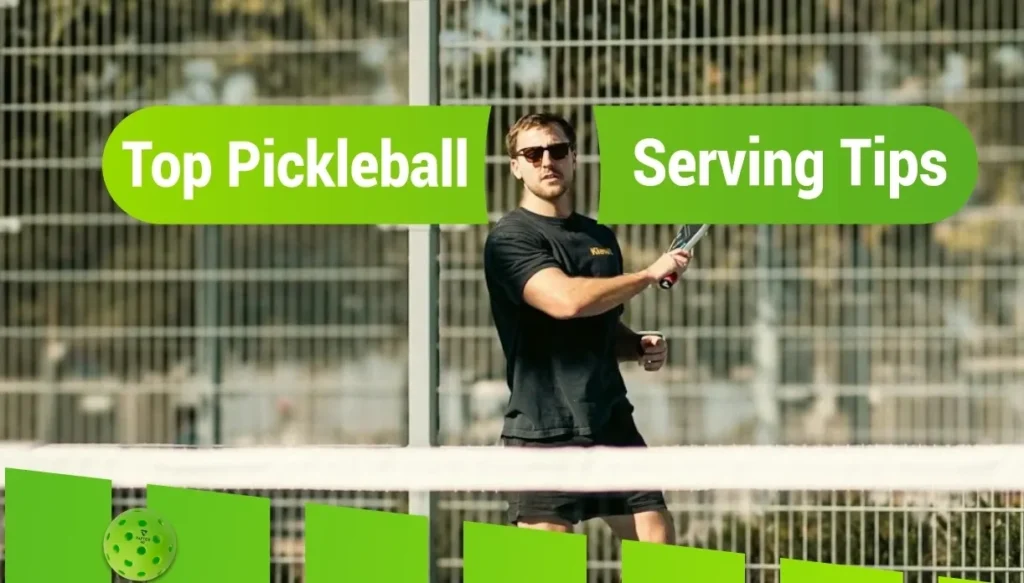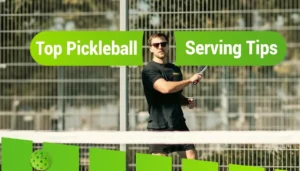You ever have one of those moments where you’re lining up to serve and you’re so sure you’re about to crush it… and then you hit the ball right into the net? Or worse—long, by like a mile? Yeah, that was me in my first tournament.
I was nervous, sweaty, and trying way too hard to look like I knew what I was doing. My opponent barely moved the whole match because I gave away points with bad serves. Painful, right?
That experience taught me real quick that serving isn’t just about starting the rally. It’s about setting the tone, controlling the pace, and—if you do it right—getting into your opponent’s head a little bit.
So today, I want to share what I’ve learned over time through trial, error, and lots of practice. These pickleball serving tips helped me turn my serve from a liability into a strength. We’re talking about adding spin, generating power, and hitting with real accuracy—all while keeping it simple and repeatable.
Let’s get into it.
Why I Take My Serve Seriously
For the longest time, I treated the serve like a formality. Just get it in and get the point going. But once I started learning how to control the ball better, I realized: the serve is a weapon. It gives me a chance to put pressure on my opponent before we even start rallying.
When I serve well, I feel more confident. When I serve with purpose, I set myself up for easier returns—and sometimes, even a few freebies when my opponent can’t handle the spin or pace.
How I Learned to Use Spin on My Serve
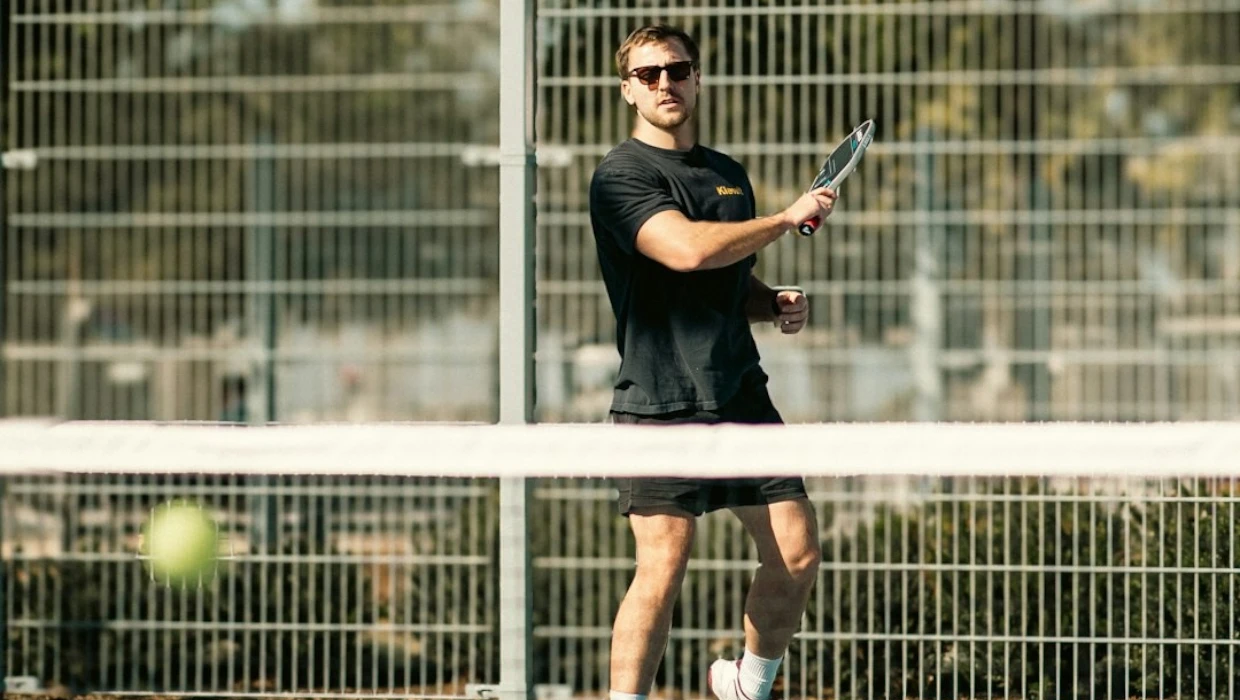
Here’s Why Spin Matters (A Lot)
Spin isn’t just for show—it forces your opponent to adjust. When the ball dips, floats, or curves unexpectedly, even the most experienced players can mess up. And when you’re the one controlling that chaos? Oh, it feels so good.
The 3 Spin Serves I Rely On
These are my go-to spin serves—the ones that have helped me turn the serve from a weakness into a strength:
1. Topspin Serve
-
How I Do It: I brush up on the ball from low to high, kind of like flicking it upward with control. It took some trial and error, but once I found that contact point, it started clicking.
-
Why I Love It: It makes the ball dive down fast after clearing the net. A lot of players misjudge it and end up popping the return too high—or not getting to it at all.
2. Backspin (Slice) Serve
-
How I Do It: I slice down and through the ball like I’m gently chopping something (but less dangerous). I aim for it to float just over the net and stay low.
-
Why I Use It: It keeps the ball low and awkward. If I notice someone struggles with low balls, I’ll use this serve to force them to lift it—usually setting me up for an easy third shot.
3. Sidespin Serve (Screwball)
-
How I Do It: I swipe across the ball, kind of like giving it a side punch. Depending on how I angle my paddle, I can make it curve left or right.
-
Why It’s Fun (and Effective): I love pulling people out of position. The sidespin makes the ball curve, and half the time, they don’t see it coming. It adds a bit of drama to the point, which is always fun.
My Favorite Spin Drill
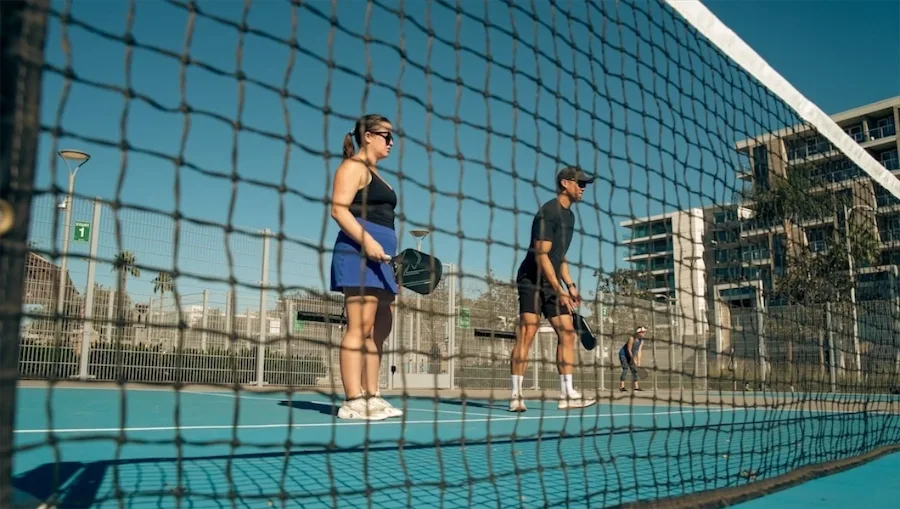
Here’s a little drill I use: I stand near a wall and serve toward it, trying to make the ball curve or dip before it hits. If I can make the ball jump to the side or drop suddenly, I know I’m putting real spin on it. It’s simple, but super effective.
How I Generate Power Without Losing Control
I used to think power meant swinging as hard as possible. Spoiler alert: it doesn’t. I was putting too much strain on my arm and still hitting inconsistent serves. Once I learned to use my whole body, everything changed.
3 Power Tips That Changed My Game
1. Weight Transfer
I start with my weight on my back foot and shift it forward as I swing. It feels more natural now, but I used to have to exaggerate it to really feel the motion. Once I got it down, it added instant power to my serves.
2. Core Rotation
This one was huge for me. I used to rely only on my arm (bad habit from tennis), but when I started engaging my core—twisting through the serve like I’m swinging a bat—I noticed way more pop on the ball with less effort.
3. Staying Balanced
Slipping or lunging too hard would always mess up my serve. So now I focus on keeping my feet grounded, knees slightly bent, and body balanced. That way, I can use more force without losing control.
My Go-To Power Drills
One drill I do is the weight shift drill—just practicing slow-motion serves with a full transfer from back to front foot. It helps me get into rhythm and build muscle memory.
Another one is the core twist drill: I practice rotating my torso without the paddle, then add it in once the motion feels solid.
How I Improved My Accuracy (Without Getting Boring)
Okay, let’s talk accuracy. I used to miss long a lot—especially when I tried to serve deep. What helped me most was picking a target every single time I served.
Not just a vague “get it in” mentality—but “hit their backhand in the corner” or “aim just over the T.”
My Accuracy Tips
-
Pick a Spot: I always choose a clear target before serving.
-
Slow Down: When I rush, I miss. So I breathe, bounce once, and take my time.
-
Make Practice a Game: I challenge myself to hit five serves in a row to a specific zone. If I miss, I start over. It keeps things fun and sharp.
Sharpening My Serve Accuracy
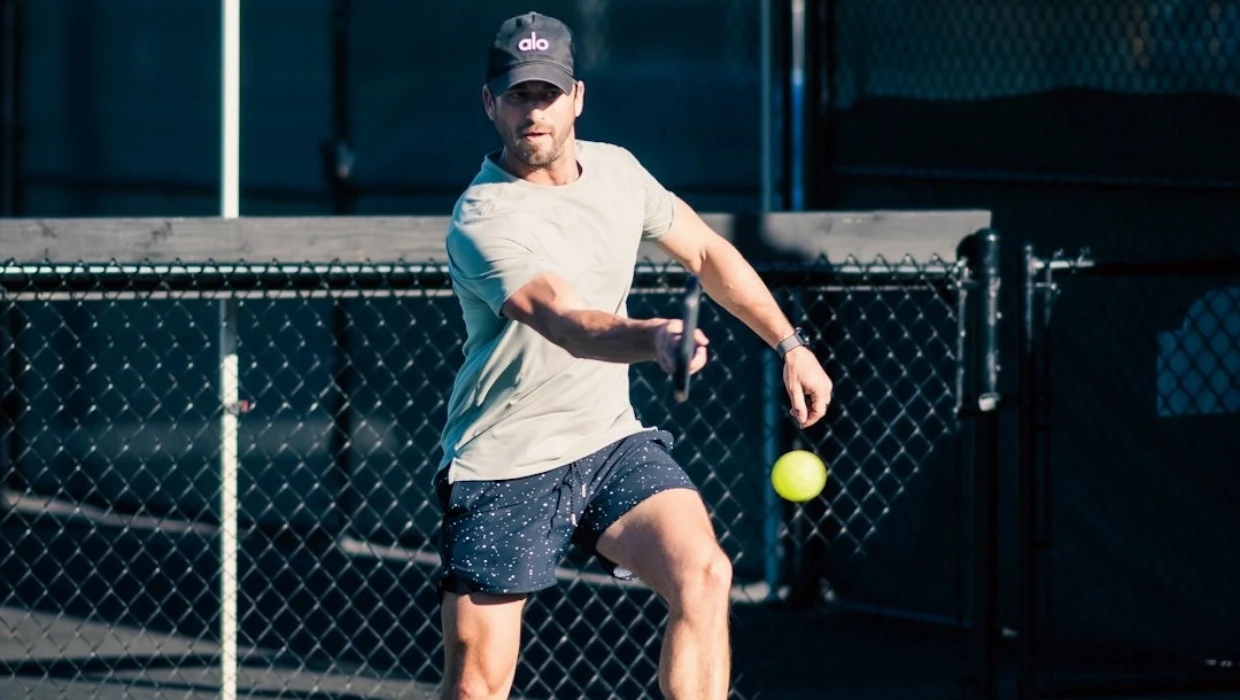
What good is a powerful serve if it doesn’t land where I want it to? That’s where accuracy comes in. I’ve learned that it doesn’t matter how much spin or power I’m putting on the ball—if I can’t place it with precision, I’m giving my opponent easy points. And honestly, that’s just not the kind of gift I like handing out. 😉
Why Accuracy Matters
I used to think the serve was mostly about getting the point started, but when I started focusing on accuracy—really targeting specific spots—I saw a big difference.
There’s no wind to blame if the ball goes out, and that means I’m fully responsible for every serve I hit. That kind of accountability has actually made me a way more intentional server.
The more I aim with purpose, the more I keep my opponents guessing. That’s the goal: stay unpredictable and keep the pressure on.
My Favorite Accuracy Tips
1. Foot Placement
It all starts with my feet. If they’re off, the whole serve goes sideways (sometimes literally). I make sure I’m balanced and behind the baseline before I even think about swinging. It sounds basic, but I’ve lost points because I didn’t pay attention here.
2. Pre-Serve Routine
This one’s a game-changer for me. Before every serve, I take a deep breath, bounce the ball a couple of times, and visualize my target. It’s nothing fancy, but it gets me centered. If I skip this, I rush—and rushed serves usually mean errors.
3. Targeting Specific Spots
Instead of just trying to “get it in,” I aim for something—like their backhand corner or deep down the middle. When I place the ball with purpose, I instantly feel more in control. Plus, it throws off my opponent’s rhythm, and I’m always here for that.
Drills That Helped Me Get More Accurate
One of my go-to drills is what I call target practice. I’ll set up cones or markers in different spots of the service box—deep corners, sidelines, middle line—and try to hit them. It turns accuracy into a fun little challenge, and I always end up competing with myself to beat my last score.
Another one I use is the consistency challenge—I pick a target and try to hit it 9 out of 10 times. Once I hit that, I move the target closer to the edge. It’s a great way to build both confidence and precision.
Serve Types and Rules I Always Keep in Mind
Once I got comfortable with spin, power, and accuracy, I realized I also needed to really understand the rules and serve options. Whether I’m playing with friends or in a tournament, knowing the ins and outs of serve types and rules keeps me sharp—and keeps me from handing over free points.
My Quick Go-To Pickleball Serve Rules
1. Underhand Only
I always make sure to serve underhand with the paddle below my waist. Anything else? It’s illegal, and I’ve seen players lose points (and their cool) over this.
2. Watch My Feet
I’ve gotten faulted for this more than once in the early days—both feet have to be behind the baseline when I serve. One can hover, but it can’t touch the line. So now, I double-check my footwork before I go.
3. Diagonal Serve
This one’s simple but crucial: the serve has to land in the opposite diagonal service box and clear the kitchen. If it doesn’t, it’s a fault, plain and simple.
Serve Types I Use (and Why I Like Mixing Them Up)
1. Drop Serve
This is a lifesaver, especially when I’m trying to reset or keep it simple. I just drop the ball and hit it after it bounces. It gives me a little more control, and it’s easier to experiment with spin or placement this way.
2. Volley Serve
This one’s my go-to in competitive games. I hit the ball straight out of the air before it bounces, which gives me better timing for adding power or spin. It took me a while to get this serve dialed in, but once I did—wow, it felt good.
Mixing up serve types keeps my opponent guessing. One point I’ll go drop serve with a backspin, next point it’s a topspin volley. That unpredictability? That’s how I win more serves than I lose.
How I Blend Spin, Power & Accuracy for an Unpredictable Serve
Okay, so here’s where it all comes together—the fun part. I’ve learned that great servers don’t rely on just one thing. They mix it all up. I don’t want my opponent to get comfortable. The moment they start anticipating my next serve? That’s when I switch it up.
My Go-To Serving Combinations
One combo I love is starting a match with a hard, deep topspin serve to the corner. Then, on the next serve, I’ll throw in a soft sidespin that lands short and wide. It keeps my opponent off balance and forces them to move more, which is exactly what I want.
Sometimes I go power-spin-accuracy. Other times I’ll just play a mental game—serve to the same area twice, then sneak it somewhere completely different. It’s all about reading the moment and staying one step ahead.
My Serve Isn’t Just a Start — It’s a Strategy
So there it is—everything I’ve learned (sometimes the hard way!) about serving with spin, power, and accuracy. Whether I’m playing casual rec games or stepping into tournament mode, these tips keep me grounded and give me options. And the more I practice? The more natural it feels.
If you’re just getting started, don’t worry—none of this came overnight for me either. But once I committed to working on my serve, my whole game stepped up. It can happen for you too.
Now grab your paddle, pick a target, and serve like you mean it. 💪
Let’s go get it!
Top 10 Questions I Get About Pickleball Serves
How did I improve my serve accuracy?
I focused on foot placement, built a consistent pre-serve routine, and started aiming for specific spots—especially deep corners.
What’s a drop serve, and do I use it?
Yep! It’s when I drop the ball and hit it after it bounces. It’s perfect for when I want more control.
How do I add more power to my serve?
I focus on shifting my weight from back to front and rotating my core. It’s more about body mechanics than brute strength.
What are common serve rule mistakes I try to avoid?
Serving above the waist, stepping on the baseline, and jumping during the serve. I’ve been there—don’t recommend it. 😅
What spin works best for me?
Topspin and sidespin are my top picks. They add unpredictability and are easier to control than you’d think.
How did I make my serve more consistent?
Repetition, staying balanced, and not rushing. Plus, my pre-serve routine helps me stay locked in.
Why is topspin so effective in my game?
It dips fast and makes the ball bounce low and fast. It catches people off guard a lot.
Can I mix serve types during a game?
Oh, absolutely. I switch it up often—keeps my opponent guessing and keeps me from getting predictable.
How do the court conditions affect my serve?
On slick surfaces, I focus more on balance. But with no wind or sun to mess me up, I feel more in control overall.
What’s the easiest way I learned to practice spin?
The wall drill! I serve toward a wall and watch how the ball reacts—curve, dip, bounce angle. It taught me a ton.
